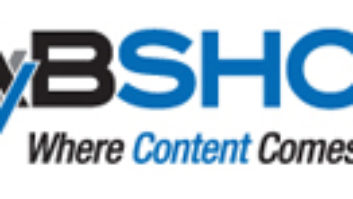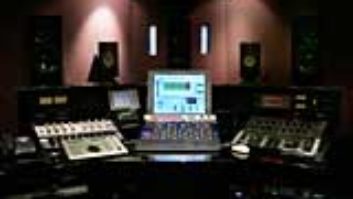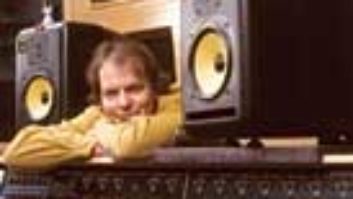Given the ever-expanding choice of editing platforms available, why choose a particular product? In SADiE’s case, the answer could be depth. SADiE software, although not difficult to use, always seems to have another layer of accessible editing depth. It would take the better part of this magazine to explore all of the SADiE’s editing features; therefore, the objective of this article will be to acquaint new users with the SADiE system in general and outline the expanded features of the new Artemis model.
SADiE systems are primarily known as editing workstations, yet perhaps it’s best to think of Artemis as a comprehensive digital editing system “plus.” In addition to its digital I/O and a complete set of mastering tools, the Artemis system includes AD/DA converters, making it entirely possible to use as a stand-alone hard disk recording system. This system can take you from initial tracking all the way to the CD mastering process. The new Artemis model supports up to 18 tracks of 44.1kHz, 24-bit audio, or up to 30 tracks of 44.1kHz, 16-bit audio per card, and sample rates up to 192 kHz.
Priced at $15,495, the basic SADiE Artemis system consists of a businesslike, four-rackspace PC chassis, a rackmountable breakout box, a 17-inch CRT monitor, keyboard and mouse. The 4U chassis houses a standard PC motherboard with Pentium III processor (for OS chores only), 128 MB of PC133 RAM and an 8MB AGP graphics card. The case also houses the CAT timecode card, the Artemis card, a 10GB system drive and removable SCSI drive. All Artemis systems currently ship with Windows 2000 as the standard OS.
The breakout box features eight channels of AES/EBU digital I/O on four XLRs (these can also accept S/PDIF I/O if desired), XLR digital reference input, four channels of RS-422 9-pin serial machine control, XLR SMPTE LTC timecode I/O, and eight channels of ¼-inch, unbalanced analog I/O. The Breakout Box 800B option adds balanced XLR analog inputs and outputs. The system can be expanded by adding up to four Artemis cards and associated breakout boxes, providing a maximum of 32 audio inputs and outputs.
Audio storage chores are handled by a removable 18GB SCSI drive. Additional SCSI devices can be connected to the external port on the Artemis card.
IN SESSION
SADiE’s proprietary software runs solely in conjunction with SADiE’s hardware, but the system itself runs on most versions of Windows. The unit I tested operated on Windows 98. SADiE has a reputation for writing solid and elegant software, and this version (4.0) was no exception. I did not experience a crash the entire time I used the Artemis. All of the DSP processing occurs on the Artemis card, so there is virtually no stress on the operating system. It is safe to say that you can put PC stability fears out of your mind.
Anyone familiar with Steinberg’s Wavelab and Sonic Foundry’s Sound Forge editing software should have no trouble with SADiE’s main editing screen. Editing on a SADiE system can be as elementary or as involved as you require. Although I found basic editing to be greatly intuitive, finding some of the deeper functions can be a little difficult. This is a fairly minor issue, because nearly every editing function can be assigned to a hot key; therefore, after an initial learning curve, SADiE-style editing becomes remarkably fast.
Audio files are loaded into the Artemis either by importation or by real-time recording via SADiE’s digital or analog inputs. SADiE can import nearly all types of audio files, including the new AES-31 standard, a SADiE first. In addition, SADiE is able to read hard drives formatted in the SADiE 2, SADiE 3, HFS, FAT 16 and FAT 32 standards. The Artemis is now shipping with its audio drive formatted to FAT 32 in compliance with the AES-31 protocol. A cool feature of the Artemis is the ability to stream and edit audio from these differently formatted drives simultaneously.
Once audio files are loaded into the Artemis, all signal processing occurs at 32-bit floating point precision, ensuring that there will be virtually no degradation of audio quality. The Artemis is capable of extensive DSP via its built-in processors and optional proprietary plug-ins, including a de-esser, stereo expander, graphic EQ, dithering and a mastering limiter. Also optional is a complete set of CEDAR sound restoration tools and Apogee’s UV22 bit-reduction plug-in. Direct X effects may be also applied offline — not in real time.
A session with SADiE starts with the creation of a Project, containing a playlist (called an EDL), a mixer and a Clipstore that holds all audio clips associated with the current Project. EDLs (Editing Decision Lists) are created either by importing audio, or directly recording it via SADiE’s inputs. Each EDL consists of a series of audio clips. These clips can then be individually edited from within the EDL. All editing of clips including volume, crossfading and application of most effects is nondestructive and occurs in real time. Furthermore, EDLs and mixer parameters may be automated. Automation is locked in all the way down to the sample level within each clip. When a clip is moved, copied or edited, all automation data will move along with the individual clip. Doing cuts in real time while playing automated audio is remarkable!
Each EDL created can be routed to a specified channel in SADiE’s mixer screen, which features the usual Vertical Fader, Plus Pan, Solo and Mute buttons. EQ and dynamic processors are simply “drag and dropped” into each channel strip; the parameters of these processors can also be automated.
Once an EDL is created, automated and processed, and the clips are placed in the desired order, a PQ list can then be manually or automatically generated. At that point, a CD master is created. The Artemis is capable of creating PQ masters to DDP 1.0, 2.0, Red, Orange and Blue Book standards, plus other formats as well.
Many mastering labs still tend to favor hardware over software processing options, but I have to say that SADiE’s EQ and dynamics plug-ins sounded superb. The sonic quality is definitely on par with current state-of-the-art hardware devices.
One aspect of the Artemis system puzzles me: The SADiE system is widely known as one of the finest audio workstations available. They are found in major mastering rooms and post-production facilities around the world. Why, then, are the system’s stock converters only 20-bit? True, SADiE is primarily known as an editing platform, and, yes, the vast majority of audio will be recorded via the digital inputs or imported into the system, but if you are going to include AD/DA converters in an otherwise excellent system, then incorporation of high-quality, 24-bit converters should be a given, especially when the hardware has been recently upgraded, as is the case for the Artemis. (Note: SADiE’s tech support staff informs me this will be addressed in the next version of the hardware.) I would also like to see the Artemis have the ability to run Direct X and other plug-ins in real time. Some first-class and truly remarkable tools are now available in these formats.
In the stratified air occupied by high-end digital editors, SADiE workstations have long held their own space. Today’s engineers expect to have the ability to do finely detailed audio editing. The sonic quality, speed and editing depth possible with the SADiE Artemis guarantees it will stay among those at the top.
SADiE Inc., 2218 Metro Center Blvd., Nashville, TN 37228; 615/327-1140; fax 615/327-1699; www.sadie.com.
Pete Leoni is the technical director at QPerformance, a division of Eastcoast Music Mall. He can be reached at[email protected].



